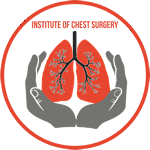Myasthenia Gravis (MG) and Thymoma are two medical conditions that may seem unrelated at first glance. However, a deeper examination reveals a fascinating connection between them. Myasthenia Gravis is an autoimmune disorder that affects the neuromuscular junction, leading to muscle weakness and fatigue. Thymoma, on the other hand, is a rare type of tumor that develops in the thymus gland. This article explores the intricate relationship between Myasthenia Gravis and Thymoma, shedding light on how these two conditions are linked and how their coexistence can impact patient diagnosis and treatment.
1. Understanding Myasthenia Gravis (MG)
Myasthenia Gravis is an autoimmune disorder in which the body’s immune system mistakenly targets and attacks the acetylcholine receptors at the neuromuscular junction. Acetylcholine is a neurotransmitter responsible for transmitting signals from nerves to muscles, allowing muscle contraction to occur. In MG, the immune system’s attack on these receptors leads to reduced muscle stimulation, resulting in weakness and fatigue, especially in the muscles that control eye and eyelid movement, facial expression, swallowing, and breathing.
Symptoms of MG can vary from mild to severe and may include drooping eyelids, double vision, difficulty chewing and swallowing, slurred speech, and weakness in the limbs. The severity and pattern of muscle weakness often fluctuate, making the diagnosis challenging.
2. The Role of the Thymus Gland
The thymus gland is a crucial component of the immune system, located in the upper part of the chest, behind the breastbone. It plays a pivotal role in the development and maturation of certain immune cells called T-lymphocytes or T-cells. These T-cells are essential for recognizing and attacking foreign substances in the body.
3. The Link between Myasthenia Gravis and Thymoma
The relationship between Myasthenia Gravis and Thymoma lies in the thymus gland. In approximately 15% to 20% of MG cases, individuals have an underlying Thymoma. This association suggests that there is a close link between the development of these two conditions. However, the exact mechanism behind this connection is not fully understood.
4. Thymoma: A Rare Tumor
Thymoma is a rare tumor that originates from the epithelial cells of the thymus gland. Although it is generally considered a slow-growing tumor, it can be locally invasive and, in some cases, spread to other parts of the body (metastasis). Thymoma is more commonly diagnosed in adults between the ages of 40 and 60, and its prevalence is higher in individuals with MG.
5. Thymectomy: A Treatment Approach
Thymectomy, the surgical removal of the thymus gland, is a standard treatment for both MG and Thymoma. In patients with MG, thymectomy aims to reduce or eliminate the production of autoantibodies attacking the acetylcholine receptors. Many MG patients who undergo thymectomy experience significant improvement in their symptoms, especially if the surgery is performed early after diagnosis.
For patients with Thymoma, thymectomy is the primary treatment to remove the tumor and prevent its potential spread. In some cases, patients with Thymoma may not exhibit MG symptoms initially but can develop them later, even after the tumor has been removed.
6. Impact on Diagnosis and Treatment
The coexistence of Myasthenia Gravis and Thymoma can impact the diagnosis and treatment approach. It is crucial for physicians to consider the potential presence of Thymoma in MG patients, especially those with generalized or severe MG. Routine imaging studies, such as chest CT scans, are often performed to detect the presence of a Thymoma.
Furthermore, understanding the relationship between these conditions can also help in predicting the prognosis and tailoring the treatment plan. Patients with both MG and Thymoma may require a multidisciplinary approach involving neurologists, oncologists, and thoracic surgeons to develop a comprehensive treatment strategy.
Conclusion
The relationship between Myasthenia Gravis and Thymoma is a captivating area of medical research that continues to be explored by healthcare professionals. The connection between these two conditions highlights the complexity of the human immune system and its potential involvement in various diseases.
If you or someone you know is experiencing symptoms related to Myasthenia Gravis or Thymoma, seeking prompt medical attention is crucial for an accurate diagnosis and timely treatment. Early intervention and a collaborative approach among medical specialists can make a significant difference in managing these conditions effectively.







